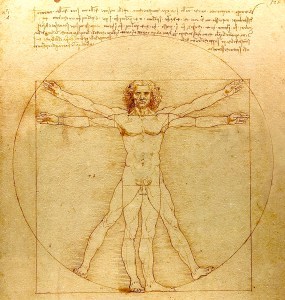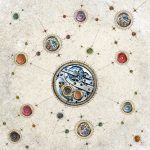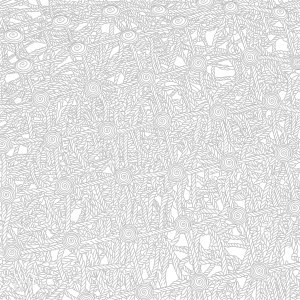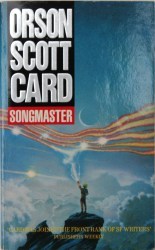Jake Jackson's Blog, page 15
October 18, 2016
Concepts | Fibonacci Patterns
 0 1 1 2 3 5 8 23 31 54 etc, the Fibonacci sequence (where the total of the two preceding numbers equals the next number) can be found in many aspects of life. Based on Phi it expresses a fundamental relationship between numbers and shapes, and seems to measure the motivating force behind the growth of such systems, from the slow turn of galaxies in the universe, the expansion of our universe from the point of Big Bang, to more observable everyday phenomenon such as the pattern of seeds in a sunflower.
0 1 1 2 3 5 8 23 31 54 etc, the Fibonacci sequence (where the total of the two preceding numbers equals the next number) can be found in many aspects of life. Based on Phi it expresses a fundamental relationship between numbers and shapes, and seems to measure the motivating force behind the growth of such systems, from the slow turn of galaxies in the universe, the expansion of our universe from the point of Big Bang, to more observable everyday phenomenon such as the pattern of seeds in a sunflower.
Phi is also known as the Golden Section or the Golden Ratio and is commonly found in traditional art and architecture as a means of presenting a pleasing sense of harmony and balance. Although it’s expressed mathematically with the value 1.618 it’s presence is detected in human behaviour (stock markets for instance) and the twisting stems of plants as they grow. Its ratios can be found in the microchips that run our computers, the patterns of migrating birds and the sound frequencies that construct western notions of music.
 The combination of interlocking patterns of Fibonacci sequences create the complex structures of the living world, from beehives to pine cones, daisies to star fish, and the proportions of the human body. Leonardo da Vinci‘s famous Vitruvian Man shows the five points of the pentagram, and the proportional sectioning of limbs as they conform to the balance and growth of the Phi-based sequence.
The combination of interlocking patterns of Fibonacci sequences create the complex structures of the living world, from beehives to pine cones, daisies to star fish, and the proportions of the human body. Leonardo da Vinci‘s famous Vitruvian Man shows the five points of the pentagram, and the proportional sectioning of limbs as they conform to the balance and growth of the Phi-based sequence.
For the purposes of the sf and fantasy fiction of These Fantastic Worlds, the stories of Jake Jackson, the Fibonacci sequence has an impact on the motivation of several characters and systems, and is used in conjunction with the concept of Being not Being, and Schopenhauer’s Will.
The post Concepts | Fibonacci Patterns appeared first on these fantastic worlds.
October 11, 2016
Concepts | Being not Being
The core concept of ‘Being not Being’ is essential to the sf and fantasy fiction of Jake Jackson. Alongside other notions of Time, and Will, it allows the exploration of the universe before the Big Bang event, and out beyond the limits of the expanding universe.
An object can both ‘be something’ and ‘not be something’ (else). At a simple level a stone is a hard object and not a soft object. This concept is a useful philosophical tool to help us think about what existed before the Big Bang and, if the universe is expanding, what it is expanding into.
If Time, at least our concept of standard time exists only from the point of the Big Bang, and is defined by the limits of the universe created by that event then if anything exists beyond and before then it could be described as both ‘being’ and ‘not being’. We know we cannot define it in Time, to the extent that currently we can predict Time back to moments after a Big Bang, but not before. However, in not being defined by Time, it is defined by the absence of Time. It becomes something we cannot describe with any accuracy except in terms that it is not. So it is defined by Time. It is also defined by our inability to measure anything beyond the limits of our understanding of Time and Space and our language, mathematical or otherwise, to describe the nature of existence.
A Supreme Entity?
A ‘Being’ (i.e. not a state of being) could also be described as a ‘not Being’. Perhaps this is what drives faith in a supreme entity, a God or force, one which exists in pre-eternity, as a progenitor of the Big Bang, or at least precedes it, either of which is beyond our understanding. Our inability to ‘prove’ such an existence is also the inability not to prove. This neither indicates nor invalidates a God, or some form of ultimate power or force, but does address a state of beyond-ness which encloses the definable limits of Time and Space, in terms that some of the religions and philosophies might recognise, such as the creative formlessness of Hinduism’s Brahman.
The simultaneity of ‘Being and not Being’ offers an essential duality, a balance not necessarily between between light and dark, but light, and the absence of light, darkness and absence of darkness. We talk in terms of matter and antimatter, but these are not opposites, they’re part of the same phenomenon.
So How does this tie into the Books?
The duality of ‘Being not Being’ is the device through which the original creature of light, Ka, is captured by the Sidhe. The momentary, fundamental break in balance that frees Ka also releases others, from the beginnings of time, across the plains of the universe, and creates the need for Hunter to seek and return them to their natural place.
The next post will take a look at Schopenhauer’s Will, and how it operates with the notion of ‘Being not Being’.
The post Concepts | Being not Being appeared first on these fantastic worlds.
October 4, 2016
Concepts | Field of Time



These are part of a sequence of illustrations to show the hubs, nodes and connections across a field of Time, a concept used in Jake Jackson’s forthcoming sf and fantasy stories in Echoes in Time, Fireflies on a Distant Planet, Fibonacci Rising and Graveyard Planet.
Each node is a moment, a time event. The nodes are connected across two dimensions on paper, in three dimensions of space when seen from within a sphere (the viewpoint of the expanding universe from inside), and, with the addition of Time to four dimensions in the Spacetime Continuum, either at the macro level, or sub atomically.
Whichever way you choose to visualise this concept of Time, freed from the constraints of the progression model of standard time, then travel across all nodes is possible, to any point (or moment) in Space, or Time, from the beginnings of this universe to the edges of expansion, from a dust cloud at the penumbra of Alpha Centuri and the Milky Way galaxies, to a street in Manhattan, or Barcelona, Notting Hill, or the Rift Valley in Kenya.
The post Concepts | Field of Time appeared first on these fantastic worlds.
September 29, 2016
Concepts | Perceptions of Time
Here’s another new graphic designed to explain core concepts used in the forthcoming sf and fantasy books by Jake Jackson, particularly concerning the beginnings of the universe, and notions of time and space.
This illustration show a series of time nodes (or time events) turning on a spindle, operating both as a series of clock mechanisms, and as part of a larger pendulum motion, governed by gravity breaks and an escapement to restrain it in the greater structure of space and time. Each node clicks around, in a pulse of standard time, like the Harrison navigation clocks developed to solve the longitude problem of keeping time whilst navigating across a globe.
It is possible to view such a notion of time as a duality, observing each time event in its place in a procession of moments, and as a pearl of Indra’s Net, where the reflections of all other pearls are embraced within the image of each one, so connecting with all other pearls, simultaneously, back to the beginnings of the universe. Such duality is important to the underlying mechanism of the books in the universe of Hunter, Bain, Ka and others, and allows those with the vision, or the ability to attain it, to travel across the moments, or nodes of time, at will.
The post Concepts | Perceptions of Time appeared first on these fantastic worlds.
September 20, 2016
Concepts | Indra’s Net

One of a number of new graphics designed to explain core concepts used in the forthcoming sf and fantasy books by Jake Jackson, particularly concerning the beginnings of the universe, and notions of time and space.
These illustrations show three different views of the same concept, which is time as a net, with nodes (time events) strung as knots between ropes, connected above and below.
This dynamic view of time is based on the Ancient Buddhist notion of Indra’s Net, and functions as a metaphor for the transcendental nature of existence. Each node, or jewel is connected, ultimately, with every other node. I use this concept as an intrinsic element of the expanding universe, maintaining the connections of the once super-dense universe, so that even as all matter expands outwards the connections between all elements remain in place. The idea of a net, which can be folded, stretched, added to, allows me to explore time travel between the time events, which, in being connected across all points, from the beginnings of the universe and beyond, facilitates an ever-shifting mode of time travel which undermines our perception of time as a progression of events.
The metaphor of Indra’s Net, in Mahayana Buddhism offers an infinite net of pearls strung across the skies, over the Palace of Indra. To peer into the eye of any one pearl is to see the reflections of all other pearls, thus connecting all points of the net. The net is the universe, the palace is heaven (or at least an eternal dwelling place of living things), in Vedic Hindu scripts Indra is close to the Odin or Thor in Norse mythology and the Zeus of the Greeks. He is a storm-bringer, war-monger, defeater of evil, and defender of all living things. Buddhism, born out of Hinduism took a more philosophical view of Indra, and used the story to speak of interconnectedness and the unity of existence, beyond the transient, temporal homes of our physical bodies.
There is a concept in quantum theory called Hadron’s Bootstrap, which some (including Fritjof Capra in his The Turning Point) have argued is a modern version of the ancient notion of Indra’s Net. There’s so much to say about this I’ll need to revisit in more depth, in later posts.
The post Concepts | Indra’s Net appeared first on these fantastic worlds.
September 14, 2016
Concepts | Waves of Time
One of several new graphics designed to explain core concepts used in the forthcoming sf and fantasy books by Jake Jackson, particularly concerning the beginnings of the universe, and notions of time and space.
This illustration shows the flow of time events, as nodes across a wave.
The wave of nodes presents a dynamic view of time and space, which moves around our human perception of progressive time events. The wave of time events reveals a superstructure of motion which flips and swirls from the beginnings (in the First Event) over 14 billion years ago, to the edges of the expanding universe now. At the beginning, no notion of time existed, just a state of being not being, a stasis of existence which, once released by the First Event, flowed out in all directions, with all matter, once densely packed together now stretched outwards in time and space.
For those with the sight, either through vision, or purpose, time events can be travelled to and from, in many different sequences, so disorder becomes order.
The post Concepts | Waves of Time appeared first on these fantastic worlds.
August 30, 2016
Concepts | Gravity Pulls at Time



Each node is a time event that sits as a moment of Space Time. With the correct sight, movement between the nodes can be made along any of the connecting lines. Where the new Gods, or Children of Tiamat have fallen from the Old Place, beyond the beginnings of the universe, their dense mass increases the gravity of the node into which they’ve fallen. Dark Hunter can detect these gravitational shifts and is drawn towards them.
This is one of several new graphics on These Fantastic Worlds designed to explain core concepts used in the forthcoming sf and fantasy books by Jake Jackson.
Please note: the slider used on this page reduces the detail to a blur so the individual images will be displayed in a forthcoming portfolio.
The post Concepts | Gravity Pulls at Time appeared first on these fantastic worlds.
April 26, 2016
Macbeth, A Gothic Chaos
Shakespeare explores the tragic consequences of ambition and human weakness in his masterful study of guilt, The Tragedy of Macbeth. Greed and shame struggle mightily for the souls of the protagonists as they submit to supernatural forces that press cruelly at the soft core of humanity. The play’s dark landscape, cast with threads of secret desires and murderous intent, with its echoes of ancient Greek drama, later became a foundation for the gothic: the art of Henry Fuseli and William Blake almost two centuries later, the dark horrors of Charles Brockton Brown and Mary Shelley to the more literal terrors of post apocalyptic literature of today.
Fate, Prophesy and the Supernatural
Hearing vengeful voices along dark corridors, in the shadows, and from the house itself the play is drenched in the supernatural. It’s in the weather, the thunder and the lightning at the beginning until the very end when the skies break; it’s in the hallucinations and visions, of floating daggers, Banquo’s ghost, of the blood imagined on the hands, and the lurking presence of the three weird sisters.
“I heard a voice cry, ‘Sleep no more!
Macbeth does murther sleep – the innocent sleep,”
(Act II, Scene ii)
Such atmosphere hauls the audience into the belly of the beast. The natural order is severed by the actions of a febrile Macbeth and the insinuations of his wife, Lady Macbeth. The chaos all around both serves to highlight the drama of the chaos, but to fuel it too, for Macbeth’s actions create further disorder, the three murders are echoes of the three witches, the visions of ghosts and blood are manifestations of his guilt.
Shakespeare explores the tortuous path of Fate in this chaos. On the one hand we are to believe the action is prophesied, that Macbeth is destined to murder the king and become king himself, but of course, he could have turned away and not allowed the supernatural musings of the hags on the heath to tease at his secret ambitions. However, as he says, “so fair and foul a day I have not seen” (Act I, scene iii) he hints at an inner turmoil that both welcomes and recoils at the ghastliness of the day, an excitement where there should be none at all, as he returns from the bloody battle at the beginning of the play.
In Elizabethan times witches and other subtle supernatural forces were feared but accepted as a wondrous, uncomfortable truth. The pursuit of religious purity in a Europe riven by brutal conflict between Catholic and Protestant wrought a superstitious mindset in a general population regularly threatened with Hell and damnation by its priests. For a Shakespearean audience the interventions of the weird sisters would have struck a horrifying familiarity, an anguish that churned in their stomachs and found its echo on stage. Shakespeare relies on this for his convincing portrayal of death and corrupted ambition.
Prophesy per se was a powerful force. The Bible, full of ‘waking dreams’, as the Almighty communicating through visions (Abraham, Jacob, Solomon etc), lends a respectability wilfully misused by Shakespeare’s weird sisters. To emphasise the otherworldliness of these forces the language itself is sclerotic and seductive, so very different from the iambic pentameter of the more ordered sections of the play. Perhaps the witches are manifestations of Macbeth’s darkest desires, perhaps he wills the prophesies to persuade himself of the purpose of Fate, but the effect is the same, chaos overwhelms him, brings him to the lip of his ambition through the dishonourable deaths, and he, and those around him, suffer the dreadful consequences. So this archetype for the gothic hero is built up and dashed down.
Gothic Echoes
The monumental effect of the Macbeths’ guilt, leads in both cases to madness, and suicide on the part of Lady Macbeth. That savage acts can be performed with physical ease is demonstrated throughout the play, with battles at the beginning and the end, and the simple facts of the murders off-stage, but the endurance of them is another matter:
pre-meditated, under the sly guise of ambition Shakespeare exposes the mental fragility of the human condition, echoed in so much literature (e.g. T.S. Eliot’s Burnt Norton ‘Humankind cannot bear very much reality.’). Shakespeare’s portrayal is brutal, and bloody, and observed by the hags, as gargoyles hidden in the shadows, always present, rarely seen, but their forbidding presence amongst the wild places is a permanent reminder of the dangers hunting at the edges of our desires.
Blood and Guilt
Blood spilled is an obvious symbol of chaos, and death, (of Duncan, Lady Macbeth in Act V, Scene i, says, “who would have thought the old man to have had so much blood in him”), and so difficult to remove from Lady Macbeth’s hands (‘Out, damned spot! Out, I say!, also Act V, Scene i ). And yet we know blood to be essential to life, in its proper place, pulsing and flowing through the body. This essential contradiction plays on the turmoil of the three witches’ invocation at the beginning of the play: ‘Fair is foul, and foul is fair.’
Gender Bent out of Shape
Of course, for the Elizabethan audience the ultimate sign of disorder is the unwomanly behaviour of the females in the play, from the hideous machinations of the weird sisters, to Lady Macbeth herself. In Act I, Scene v, she beseeches the otherworldly spirits to “unsex me now”, and wary that her husband is ‘too full of the milk of human kindness.’ Soon after, she loses patience with the conscience-struck Macbeth and declares (in Act II, scene ii),
“Infirm of purpose!
Give me the daggers. The sleeping and the dead
Are but as pictures; ‘tis the eye of childhood
That fears a painted devil. If he do bleed,
I’ll gild the faces of the grooms withal,
For it must seem their guilt.”
Not only does she show more determination than Macbeth, but the devilry to equate the sleeping and the dead, and the cunning to plan the blame on the grooms by smearing the blood on their faces. Such is the scale of her ambition for herself and her husband that in behaving as she thinks a man should behave she manipulates the chaotic misanthrope. She lauds a retrogressive masculinity, a violent nihilism that rages with the ‘thunder and lightening’. Contrast this at the end of Act IV, scene iii with Macduff’s mild remonstration of Malcolm that the true nature of manhood is to ‘feel it as a man.’ Here is the ‘fair’ to the Macbeth’s ‘foul’.
Gothic Themes
For the reader in search of the gothic, The Tragedy of Macbeth is drenched in the blood of intrigue, guilt and shame. The supernatural atmosphere, the wild landscapes gathered around the murders set within the narrow confines of an isolated castle, the cast of grotesqueries,
ill-omen, and dire threat to the mortal soul, these all contribute to the solid gothic foundations. Unlike later, more sensational literature though Shakespeare strives to highlight the human condition, its eternal battles with temptation and depravity.
Macbeth is though, a simple male. Goaded by prophesy, encouraged and manipulated by his wife and Fate he suffers to die an early death long before his physical demise at the end of the play. He loses himself in the greed and ambition at first, then the guilt and shame that follows. His wife takes her own life at least, while poor Macbeth is buffeted by Fate, the urging of others and the weakness of his own determination. Perhaps Shakespeare challenges us to question what we would have done, how we would behaved, certainly he forces us to think about the consequences of our actions.
Links
Download a special pdf of the entire text of The Tragedy of Macbeth.
More on William Blake
More on Henry Fuseli
Dark Fantasy in literature and art
Image at the head of this piece is a detail from Fuseli’s ‘Macbeth, Banquo and the Three Witches’, 1894, from Wellcome Images, a website operated by Wellcome Trust, a global charitable foundation based in the United Kingdom.
The post Macbeth, A Gothic Chaos appeared first on These Fantastic Worlds.
April 12, 2016
Top 100 SF & Fantasy Books. Songmaster by Orson Scott Card
Originally published in the late 1970s Songmaster is a subtle exploration of relationships, pushing at uncomfortable boundaries and playing with some pretty outré notions. In short, Orson Scott Card is doing the job of any decent SF writer. I read this, Enders Game and Seventh Son in a headlong rush, as part of the (then) new wave of writers (Harlan Ellison, William Gibson et al), after I’d gorged on the more classic SF fare of Asimov, Clarke and Bradbury.
New Wave SF
I was led into Songmaster through Ben Bova’s Godwhale, and the elegant dedication to Bova at the beginning of Songmaster is a statement of affection and intent. Scott Card’s protagonist Ansset is raised in the isolation of a Songhouse, trained to perfect a voice that has the power to change men’s minds, to seduce, and overwhelm. But when the Emperor calls, and demands the services of a songmaster so begins the long dark journey into obligation and politics, leading us to question of our own attitudes to friendship, sex and power.
Authors and their Writing
 Reading SF and Fantasy is an exercise in suspending belief. We have to accept the writer’s world as it is, and expect the writer to do his/her best to populate it effectively. Somewhere in between our imagination takes the magic of the language and weaves a third force, and that’s where SF is at its most powerful. A major factor is the need to forget who the writer is, to enjoy the book, or otherwise on its own terms.
Reading SF and Fantasy is an exercise in suspending belief. We have to accept the writer’s world as it is, and expect the writer to do his/her best to populate it effectively. Somewhere in between our imagination takes the magic of the language and weaves a third force, and that’s where SF is at its most powerful. A major factor is the need to forget who the writer is, to enjoy the book, or otherwise on its own terms.
Orson Scott Card has been highly criticised for his homophobic utterances and accused of a range of similar chauvanisms, in the run up to the release of the excellent Ender’s Game movie. It’s caused many to reassess the books they’d previously read, and now it seems impossible not to view Scott Card through this lens. I first encountered this problem with Ezra Pound whose poetry I loved until I discovered his firmly held views on fascism. It took me several years to find a way of separating the creative work from its author and admittedly, sometimes it’s just too difficult. However, when I read Songmaster as a teenager this wasn’t an issue and I loved Songmaster’s explorations of music, power and emotional turmoil, Scott Card’s rattling good storytelling and the extreme otherworldliness of his landscapes.
I’m not sure where this will sit in the final Top 100 Top SF and Fantasy Reads, but it deserves its place, where-ever that will be!
Links
Top 100 SF & F Books. Stranger in a Strange Land.
Top 100 SF & F Books. The Rebel Worlds (Poul Anderson)
Top 100 SF & F Books. The Subtle Knife.
Clark Ashton Smith: Master of Gothic, Pulp and SF classics
H.P. Lovecraft created some incredible monsters in space and time.
Front cover photograph by Elise Wells, 2016
The post Top 100 SF & Fantasy Books. Songmaster by Orson Scott Card appeared first on These Fantastic Worlds.
April 5, 2016
Fantastic Quotes 02 | Frank Herbert
“Truth suffers from too much analysis.”
Frank Herbert
#FantasticQuotes
The post Fantastic Quotes 02 | Frank Herbert appeared first on These Fantastic Worlds.






